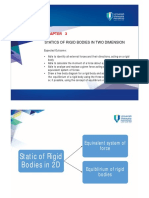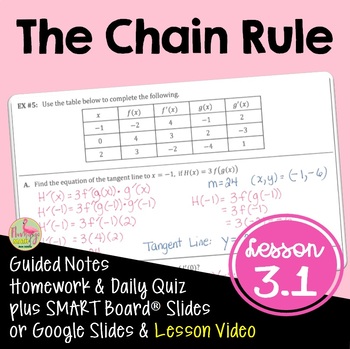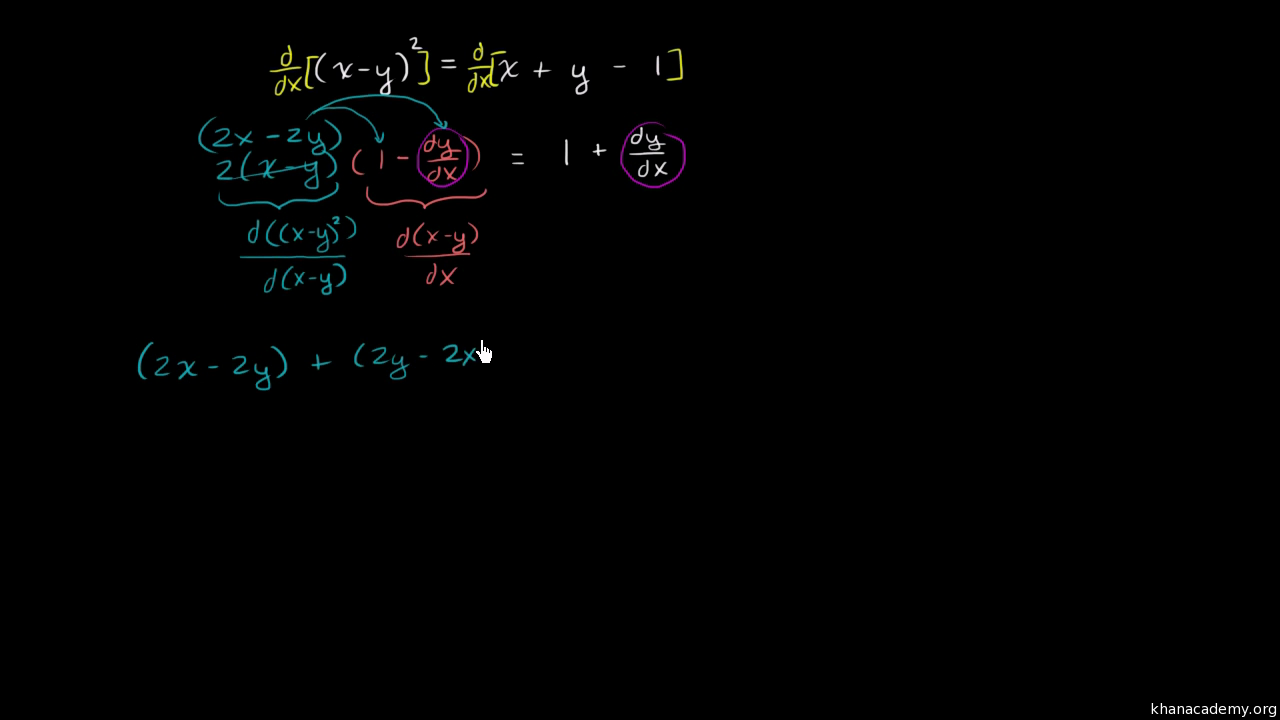Unit 3 Derivative Rules Of Compositesap Calculus
- Unit 3 Derivative Rules Of Compositesap Calculus 2nd Edition
- Unit 3 Derivative Rules Of Compositesap Calculus Integrals
- Unit 3 Derivative Rules Of Compositesap Calculus Solver
ANS 3.2 exponential notes, ANS 3.3 product & quotient notes, ANS 3.4 chain rule notes, ANS 3.5 trig rules, ANS deriv with tables, ANS 3.6 deriv of inverse, ANS 3.7 deriv arcsin & arctan and ln, ANS 3.9 Tangent Line Approx, ANS 3.10 MVT, ANS Thm Practice & Apply. Unit 3: Derivatives Functions can be analyzed graphically by their limiting behavior and rates of change. At the conclusion of this unit, students will be able to: 1. Evaluate Derivatives 2. Find the equation of a tangent line. 4 weeks Unit 4: Applications of Derivatives. This AP Calculus AB class covers a review of Unit 3 on derivatives of composites and the Chain Rule.Skill:1.E Apply appropriate mathematical rules or procedu.
Unit 3 – Derivatives
_________________________________________________________________

Unit 3 Derivative Rules Of Compositesap Calculus 2nd Edition

Unit 3 Derivative Rules Of Compositesap Calculus Integrals

Student Learning Objectives for Unit 3:
Upon completion of Unit 3, students will be able to
- Conceptualize derivative presented graphically, numerically, and analytically.
- Interpret derivative as an instantaneous rate of change
- Calculate slopes and derivatives using the definition of a derivative.
- Graph f from the graph of f’, graph f’ from the graph of f, and graph the derivative of a function given numerically with data.
- Articulate and identify corresponding characteristic of graphs of f and f’
- Determine where a function is not differentiable and distinguish between corners, cusps, discontinuities, and vertical tangents.
- Approximate derivatives from graphs and tables of values
- Know derivatives of basic functions, including power, exponential, logarithmic, trigonometric, and inverse trigonometric functions.
- Use sum, product, quotient, chain rules to calculate derivative of composite functions.
- Use derivative to calculate the instantaneous rate of change.
- Use derivatives to analyze straight line motion and solve other problems involving rates of change.
- Articulate and identify corresponding characteristic of graphs of f, f’, and f”
- Use the graph of f” to identify the points of inflection and concavity of f.
- Use the graph of f’ to identify the local (relative) extrema and the increasing/decreasing behavior of f.
- Find slopes of parameterized curves
- Find derivatives using implicit differentiation.
- Find derivatives using the Power Rule for Rational Powers of x.
This course and its exam closed on August 18, 2018. It is no longer possible to enroll in or obtain a certificate for this course.
Unit 3 Derivative Rules Of Compositesap Calculus Solver
Course Introduction
This course is designed to introduce you to the study of calculus. You will learn concrete applications of how calculus is used and, more importantly, why it works. Calculus is not a new discipline; it has been around since the days of Archimedes. However, Isaac Newton and Gottfried Leibniz, two seventeenth-century European mathematicians concurrently working on the same intellectual discovery hundreds of miles apart, were responsible for developing the field as we know it today. This brings us to our first question, what is today's calculus? In its simplest terms, calculus is the study of functions, rates of change, and continuity. While you may have cultivated a basic understanding of functions in previous math courses, in this course you will come to a more advanced understanding of their complexity, learning to take a closer look at their behaviors and nuances. In this course, we will address three major topics: limits, derivatives, and integrals, as well as study their respective foundations and applications. By the end of this course, you will have a solid understanding of the behavior of functions and graphs. Whether you are entirely new to calculus or just looking for a refresher on a particular topic, this course has something to offer, balancing computational proficiency with conceptual depth.
Unit 1: Analytic Geometry
Most of the material in this unit will be review. However, the notions of points, lines, circles, distance, and functions will be central in everything that follows. Lines are basic geometric objects which will be of great importance in the study of differential calculus, particularly in the study of tangent lines and linear approximations.
We will also take a look at the practical uses of mathematical functions. This course will use mathematical models, or structures, that predict practical situations in order to describe and study a number of real-life problems and situations. They are essential to the development of every major business and every scientific field in the modern world.
Completing this unit should take you approximately 9 hours.
Unit 2: Instantaneous Rate of Change: The Derivative
In this unit, you will study the instantaneous rate of change of a function. Motivated by this concept, you will develop the notion of limits, continuity, and the derivative. The limit asks the question, 'What does the function do as the independent variable becomes closer and closer to a certain value?' In simpler terms, the limit is the natural tendency of a function. The limit is incredibly important due to its relationship to the derivative, the integral, and countless other key mathematical concepts. A strong understanding of the limit is essential to success in the field of mathematics.
A derivative is a description of how a function changes as its input varies. In the case of a straight line, this derivative, or slope, is the same at every point, which is why we can describe the slope of an entire function with one number when it is linear. You will learn that we can do the same for nonlinear functions. The slope, however, will not be constant; it will change as the independent variable changes.
Completing this unit should take you approximately 16 hours.
Unit 3: Rules for Finding Derivatives
Computing a derivative requires the computation of a limit. Because limit computations can be rather involved, we like to minimize the amount of work we have to do in practice. In this unit, we build up some rules for differentiation which will speed up our calculations of derivatives. In particular, you will see how to differentiate the sum, difference, product, quotient, and composition of two (or more) functions. You will also learn rules for differentiating power functions (including polynomial and root functions).
Completing this unit should take you approximately 12 hours.
Unit 4: Transcendental Functions
In this unit, you will investigate the derivatives of trigonometric, inverse trigonometric, exponential, and logarithmic functions. Along the way, you will develop a technique of differentiation called implicit differentiation. Aside from allowing you to compute derivatives of inverse function, implicit differentiation will also be important in studying related rates problems later on.
Completing this unit should take you approximately 17 hours.
Unit 5: Curve Sketching
This unit will ask you to apply a little critical thinking to the topics this course has covered thus far. To properly sketch a curve, you must analyze the function and its first and second derivatives in order to obtain information about how the function behaves, taking into account its intercepts, asymptotes (vertical and horizontal), maximum values, minimum values, points of inflection, and the respective intervals between each of the above. After collecting this information, you will need to piece it all together in order to sketch an approximation to the graph of the original function.
Completing this unit should take you approximately 10 hours.
Unit 6: Applications of the Derivative
With a sufficient amount of sophisticated machinery under your belt, you will now start to look at how differentiation can be used to solve problems in various applied settings. Optimization is an important notion in fields like biology, economics, and physics when we want to know when growth is maximized, for example.
In addition to providing methods to solve problems directly, the derivative can also be used to find approximate solutions to problems. You will explore two such methods in this section: Newton's method and the method of differentials.
Completing this unit should take you approximately 13 hours.
Unit 7: Integration
In this unit of the course, you will learn about integral calculus, a subfield of calculus that studies the area formed under the curve of a function. Though not necessarily intuitive, this concept is closely related to the derivative, which you will revisit in this unit.
Completing this unit should take you approximately 21 hours.
Unit 8: Applications of Integration
In this unit, we will take a first look at how integration can and has been used to solve various types of problems. Now that you have conceptualized the relationship between integration and areas and distances, you are ready to take a closer look at various applications; these range from basic geometric identities to more advanced situations in physics and engineering.
Completing this unit should take you approximately 19 hours.
Final Exam